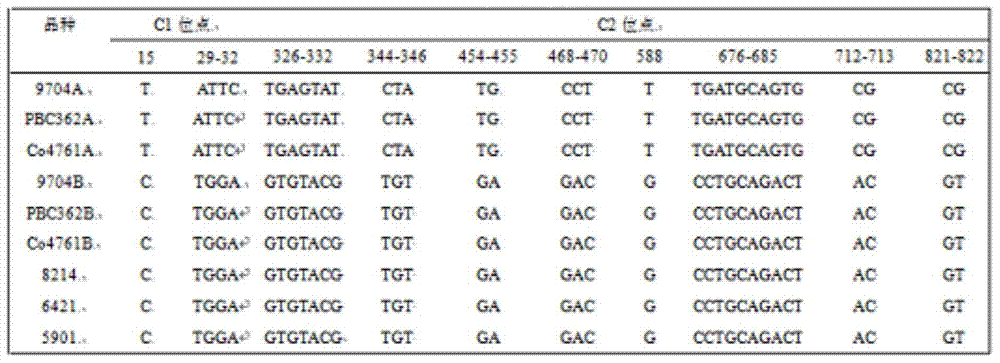Method for detecting chloroplast DNAs to identify cytoplasmic male sterile line of hot pepper
A male sterile line and male sterile technology, applied in the field of detecting chloroplast DNA to identify pepper cytoplasmic male sterile lines, can solve the problems of limiting the development of pepper hybrid breeding, few, difficulty and the like
- Summary
- Abstract
- Description
- Claims
- Application Information
AI Technical Summary
Problems solved by technology
Method used
Image
Examples
Embodiment 1
[0027] Such as Figure 1 to Figure 3 As shown, the present invention takes 3 conventional capsicum varieties as a control, carries out the amplified sequences of chloroplast C1 and C2 fragments on 3 cytoplasmic male sterile lines and corresponding maintainer lines, and uses relevant software analysis to establish capsicum cytoplasmic male sterile Chloroplast DNA molecular fingerprint of the lineage.
[0028] Its specific operation is as follows:
[0029] The first step is to prepare intact chloroplasts, and prepare intact chloroplasts in pepper leaves by differential centrifugation and sucrose density gradient centrifugation;
[0030] The second step is to extract the DNA in the above-mentioned complete chloroplast, and adopt the CTAB method to extract the total DNA in the chloroplast of the pepper leaf to be tested;
[0031] The third step, PCR amplification, carries out PCR amplification to the above-mentioned total DNA with chloroplast primers C1 and C2;
[0032] The fou...
PUM
 Login to View More
Login to View More Abstract
Description
Claims
Application Information
 Login to View More
Login to View More - R&D
- Intellectual Property
- Life Sciences
- Materials
- Tech Scout
- Unparalleled Data Quality
- Higher Quality Content
- 60% Fewer Hallucinations
Browse by: Latest US Patents, China's latest patents, Technical Efficacy Thesaurus, Application Domain, Technology Topic, Popular Technical Reports.
© 2025 PatSnap. All rights reserved.Legal|Privacy policy|Modern Slavery Act Transparency Statement|Sitemap|About US| Contact US: help@patsnap.com



